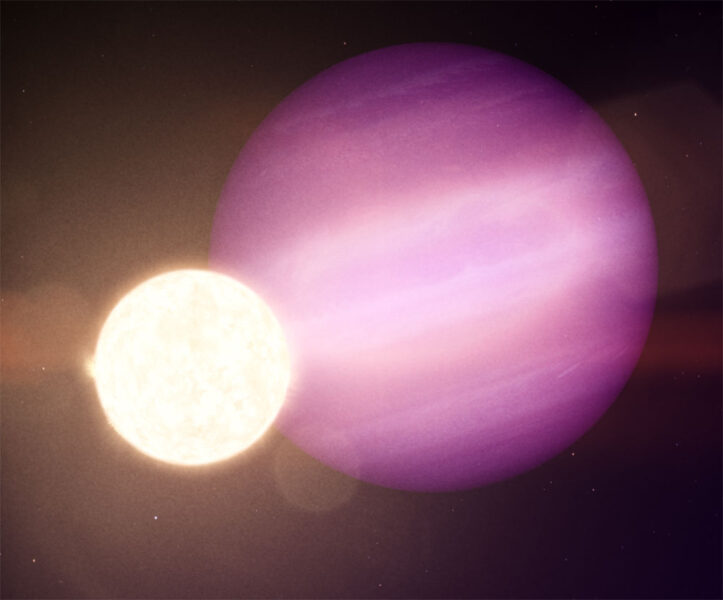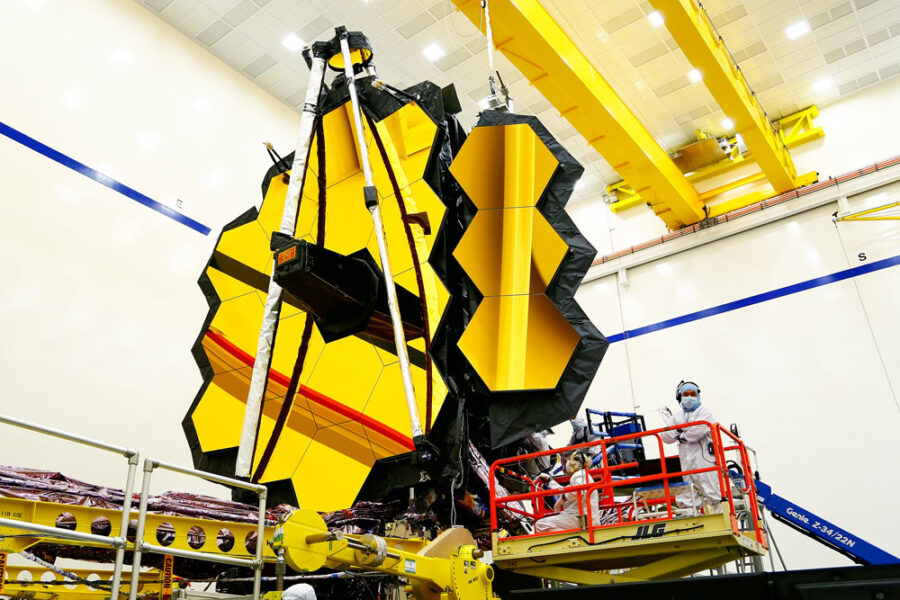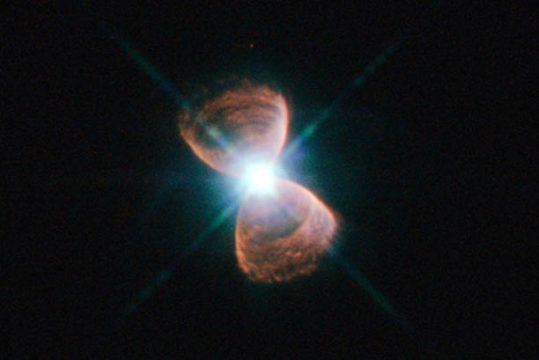
NASA’s Goddard Space Flight Center
There comes a time in every star’s evolution when the hydrogen in their cores runs out. This explosive midlife crisis is disruptive to local planetary systems, obliterating inner worlds and tossing outer ones into the void of deep space. When our own Sun expands into a red giant and then collapses into a white dwarf, Mercury, Venus, and perhaps even Earth will be destroyed. Observations of white dwarf systems show the celestial wreckage such dying stars leave behind: massive debris fields and planets literally ripped to pieces.
But new results from the Spitzer and TESS telescopes show us that, for some systems at least, a star’s death is not necessarily the end. It could even precipitate a second genesis.
Second-chance Star Systems
On September 16th, a team of astronomers led by Andrew Vanderburg (University of Wisconsin-Madison) announced in Nature that they had discovered the first intact exoplanet orbiting close to a white dwarf.
“We weren’t expecting to find a planet that was intact,” Vanderburg says. “We were expecting to find more planets that were being destroyed. This one seems to have made it past the most dangerous parts of its evolution.”
The planet, WD 1856b, is 80 light-years from Earth in the constellation Draco. It is seven times bigger than its host, and orbits so closely that it transits every 1.4 days. But how did it escape the chaos of its star’s death throes unscathed? And how might studies of these kinds of worlds enrich the growing field of exoplanet research? Vanderburg and his colleagues estimate the planet must have originated at least 50 times farther out than it is now, taking a winding and incredibly unlikely path right to the doorstep of its host and then somehow securing a stable orbit.
“We know that planets migrate inward sometimes because of hot Jupiters,” says Thea Kozakis (Technical University of Denmark), team member of a companion study published in the September 20th Astrophysical Journal Letters.
“When we first found these worlds,” Kozakis says, “we had no idea how that could happen, because gas giants just can’t form that close to the host star. Over time, we realized that they had formed further away, then moved.”
Exploring Atmospheres
WD1856b is probably a gas giant. And if a massive world can survive the perilous journey from the outer edge of a system, it stands to reason that an Earth-size world could as well. This was the focus of the companion paper, called The White Dwarf Opportunity, led jointly by Lisa Kaltenegger and Ryan MacDonald (both at Cornell University).
The study asserts that the atmospheric composition of Earth-like planets orbiting white dwarfs could be quickly and precisely retrieved with the James Webb Space Telescope, to be launched in late 2021. This feat is possible because the planets are so large compared to the white dwarf host, which makes their atmospheres much easier to see. In addition, the tight orbits create such a short transit duration, that multiple transits could be observed in a very short period of time.

Northrop Grumman
“Our paper is the first ‘end-to-end’ study of molecular detectability in white dwarf planet atmospheres,” says MacDonald. “We hope it encourages more activity in the search for rocky planets around white dwarfs.”
Reincarnation Isn’t Just for People
White dwarfs are extremely hot when they first form, on the order of 100,000 kelvin. They cool slowly, continuing to emit residual heat almost indefinitely. But is it truly possible for a terrestrial world in such a place to harbor life? In theory, the debris leftover from the red giant’s planetary nebula could seed a second generation of terrestrial planets.

NASA / ESA
However, up to half of white dwarfs show traces of heavier elements near their surface, what astronomers call ‘pollution’. This is probably due to the gravitational disarray leftover from their formation. When inner planets are destroyed in the red-giant phase, it perturbs the entire neighborhood, sending rocky bodies into the host, detaching others from the system completely, and in rare cases, shifting planets into closer orbits.
While polluted white dwarf systems are likely too chaotic for a rocky body to form a habitable world, the white dwarf WD 1856 does not appear to be polluted. And MacDonald suggests that a hypothetical rocky body that originated on the outskirts of its system could, with luck, survive its host’s evolution and subsequent orbital jostling. A rocky planet in the “habitable” zone around a white dwarf, where water on its surface would remain liquid, would remain hospitable to life for twice as long as Earth. The trick is that such a world must orbit extremely close to its host star, at least ∼0.01 a.u., or 40 times closer than Mercury is to the Sun. Assuming a terrestrial world is able to find a stable orbit at this distance, it could have enough time for life to arise.
“One possibility for a second genesis would be a ‘tertiary’ atmosphere, formed after relocation to the habitable zone, through outgassing of volatiles from the planet’s interior,” MacDonald says.
In theory, a similar perturbation could occur within our solar system after the Sun dies. Jupiter could shift into an inner orbit and become its own eponym, a hot Jupiter.
“The gas giants could live completely different lives after our star is dead,” Juliette Becker (Caltech), one of the researchers on the discovery paper, says. “So there’s no reason that this won’t happen for [far-out] smaller planets as well.”
This scenario could extend to the moons of the giant planets. Titan, Europa, Enceladus, or any of the hundreds of planet-size and planetesimal objects on the outer edge of our system could survive the red-giant expansion phase of our sun, migrate into the habitable zone, and evolve into life-bearing worlds.
“People think that when the Sun dies, that is the end of the solar system,” Becker says. “But what this discovery shows us is that’s not. In fact, you can create an entirely different, new system around the white dwarf left behind.”